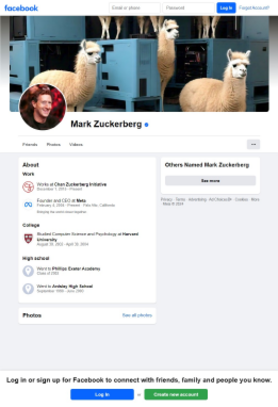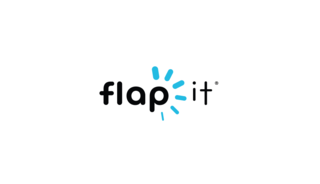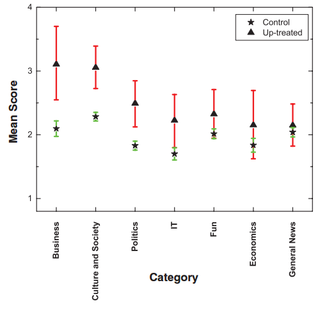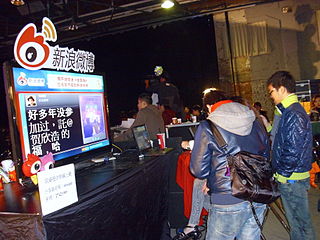 W
WAbjjad is the first Arabic social network for readers, authors, and bloggers in the Middle East. It was launched in June 2012 by Eman Haylooz and Tamim Al Manaseer. The website enables readers to sign in and have their own account, create their own virtual library where they have three lists: previously read list, currently reading list, and planning to read list. It also allows members to rate books, write their book reviews, add quotes to authors or books pages and enrich authors' pages with related information.
 W
WAmino is a social media application originally developed by Narvii, Inc. It was originally created by Yin Wang and Ben Anderson in 2014. Amino was acquired by MediaLab in 2021, and the founders are no longer associated with the application.
 W
WBiP is a freeware instant messaging application owned and developed by Turkcell. It allows users to send text messages, voice messages and video calling and it can be downloaded from App Store, Google Play, and Huawei AppGallery. BiP has over 53 million users worldwide and was first released in 2013.
 W
WCognitive Surplus: How Technology Makes Consumers into Collaborators is a 2010 non-fiction book by Clay Shirky, originally published in with the subtitle "Creativity and Generosity in a Connected Age". The book is an indirect sequel to Shirky's Here Comes Everybody, which covered the impact of social media. Cognitive Surplus focuses on describing the free time that individuals have to engage with collaborative activities within new media. Shirky's text searches to prove that global transformation can come from individuals committing their time to active engagement with technology. Overall response has been mixed with some critics praising Shirky's insights but also decrying some of the shortcomings of his theory.
 W
WCorporate social media is the use of social media websites and social media marketing techniques by and within corporations, ranging from small businesses and tiny entrepreneurial startups to mid-size businesses to huge multinational firms. Within the definition of social media there are varies types of them. Although there is no systematic way in which social media applications can be categorized. In the 2010s, an increasing number of corporations, across most industries, have adopted the use of social media either within in the workplace, for employees, as part of an Intranet or using the publicly available Internet. As a result, corporate use of social networking and micro blogging sites such as Facebook, Twitter, Pinterest, and LinkedIn, has substantially increased. According to an article by the Harvard Business Review, "Fifty-eight percent of companies are currently engaged in social networks like Facebook, micro blogs like Twitter, and sharing multimedia on platforms such as YouTube." The Harvard Business Review cites an additional 21% of companies as being in the process of implementing a formal social media initiative. The 2014 HBR report indicates 79% of companies have or will have social media initiatives in place. This percentage is an increase over a similar 2010 report that indicated that two-thirds of companies had or would have social media initiatives in place. Social media currently can be crucial to the success of growing numbers in a companies value chain activities. For marketers, Social media is a mandatory element within the promotional mix. Marketers also need to understand that marketing on social media can come with difficulties and challenges, and face both reputation and economic risks. This big push to move to Social Media to is thought to create a better experience with the consumers, as corporations are able to target specific content to their target audience. Another benefit for corporations through usage of media is that this will attract more people, and in return also create a more well known brand.
 W
WThe Communications Over Various Feeds Electronically for Engagement Act, House Bill H.R. 2884, was introduced in the United States House of Representatives on June 12, 2017, during the 115th United States Congress. The bill was intended to amend the Presidential Records Act to preserve Twitter posts and other social media interactions of the President of the United States, and requires the National Archives to store such items. H.R. 2884 was assigned to the House Oversight and Reform Committee for consideration. While in committee, there were no roll call votes related to the bill. The bill died in committee.
 W
WThe Culture of Connectivity: A Critical History of Social Media is a book by José van Dijck published by Oxford University Press in 2013 on social media platforms and their history. The author considers the histories of five social media platforms: Facebook, Twitter, Flickr, YouTube, and Wikipedia. She focuses on how their technological, social and cultural dimensions contribute to their current status.
 W
WA Digital Zombie, as stated by the University of Sydney, is a person so engaged with digital technology and/or social media they are unable to separate themselves from a persistent online presence. Further, University of Sydney researcher Andrew Campbell also expressed concerns over whether or not the individual can truly live a full and healthy life while they are preoccupied with the digital world. Other individuals have also begun referencing certain types of behaviour with being a Digital Zombie. Stefanie Valentic, managing editor of EHS Today, refers to it as people hunting digital creatures through their smartphones in public spaces, always fixed on their phones. The University of Warwick has used the term to argue that further research needs to be done with people who exist in digital form after death to help people grieve their loss.
 W
WDogs at polling stations or #dogsatpollingstations is a popular hashtag and Internet meme on social media during an election in the UK and other countries such as Australia. Typically, the dogs are photographed waiting for their owners outside the polling station and the pictures then posted on services such as Instagram or Twitter.
 W
WTo be extremely online means to be closely engaged with Internet culture. People said to be extremely online often believe that online posts are very important. Events and phenomena can themselves be extremely online; while often used as a descriptive term, the phenomenon of extreme onlineness has been described as "both a reformation of the delivery of ideas – shared through words and videos and memes and GIFs and copypasta – and the ideas themselves". It has been said that "'online' can be thought of as a way of doing things, not the place they are done".
 W
WFaceApp is a photo and video editing application for iOS and Android developed by Wireless Lab, a company based in Russia. The app generates highly realistic transformations of human faces in photographs by using neural networks based on artificial intelligence. The app can transform a face to make it smile, look younger, look older, or change gender.
 W
WFacebook is an American online social media and social networking service owned by Meta Platforms. Founded in 2004 by Mark Zuckerberg with fellow Harvard College students and roommates Eduardo Saverin, Andrew McCollum, Dustin Moskovitz, and Chris Hughes, its name comes from the face book directories often given to American university students. Membership was initially limited to Harvard students, gradually expanding to other North American universities and, since 2006, anyone over 13 years old. As of 2020, Facebook claimed 2.8 billion monthly active users, and ranked seventh in global internet usage. It was the most downloaded mobile app of the 2010s.
 W
WThe fear of missing out (FOMO) is anxiety stemming from the belief that others might be having fun while one is not present. FOMO is associated with a fear of regret, which may lead to concerns that one might miss an opportunity for social interaction, a novel experience, a memorable event, or a profitable investment. It is characterized by a desire to stay continually connected with what others are doing, and can be described as the fear that deciding not to participate is the wrong choice.
 W
WFlapit is a split-flap display that reveals real-time social media statistics such as Twitter followers or Yelp ratings. The product is designed to show off a bricks-and-mortar company's online community and increase its online presence by letting offline customers interact with the connected counter.
 W
WFutureMedia is a collaborative initiative at Georgia Tech and the Georgia Tech Research Institute to analyze the state and future of digital, social, and mobile media. Georgia Tech has around 500 faculty members working in those fields.
 W
WGidiTraffic is an online social service started on 23 September 2011. Based primarily on social media, the service employs crowdsourcing as its primary means of providing real-time traffic updates to subscribers on its platform. The service, delivered free of charge, affords its users access to various types of information. Though its broadest category of users are road users and motorists, GIDITRAFFIC lends itself as a platform for answering inquiries from anyone who requires information on any subject of interest. GIDITRAFFIC's core competence is in vehicular traffic reports, however, the service also handles all other forms of traffic.
 W
WGroundswell is a book by Forrester Research executives Charlene Li and Josh Bernoff that focuses on how companies can take advantage of emerging social technologies. It was published in 2008 by Harvard Business Press. A revised edition was published in 2011.
 W
WA hashtag is a metadata tag that is prefaced by the hash symbol, #. Hashtags are used on microblogging and photo-sharing services such as Twitter, Instagram and WeChat as a form of user-generated tagging that enables cross-referencing of content; that is, sharing a topic or theme. For example, a search within Instagram for the hashtag #bluesky returns all posts that have been tagged with that hashtag. After the initial hash symbol, a hashtag may include letters, digits, and underscores.
 W
WHike Messenger, also called Hike Sticker Chat, was an Indian freeware, cross-platform instant messaging (IM), Voice over IP (VoIP) application which was launched on 12 December 2012 by Kavin Bharti Mittal and is now owned by Hike Private Limited. Hike can work offline through SMS and has multi-platform support. The app registration uses standard one time password (OTP) based authentication process. With abundance of low-cost data, Hike decided to go from a single super app strategy to multiple app approach, so that it can focus more on the core messaging capabilities. It has numerous Hikemoji Stickers which can be customized accordingly. From version 6, the user-interface was revised and the app no longer supports features like news, mobile payment, games or jokes. As per CB Insights, $1.4 billion is the valuation of Hike with more than 100 million registered users till August 2016 and 350 employees working from Bengaluru and Delhi.
 W
WDuring a time of social distance and limited contact with others, social media became an important place to interact. Social media platforms are meant to connect people and helped the world remain connected, largely increasing usage during the pandemic. Since many people are asked to remain home, they have turned to social media to maintain their relationships and to access entertainment to pass the time.
 W
WImzy was a social media site led by ex-Reddit employee Dan McComas, which purported to create a "friendlier" alternative to Reddit. The site was started in 2016 by six former employees of Reddit and one of Twitter. Some of the first publications to announce collaboration with Imzy include Lenny Letter and the podcasts Harmontown and Black Girls Talking. On 24 May 2017, Imzy announced that the site was shutting down as they had failed to "find [their] place in the market."
 W
WThe Instagram egg is a photo of an egg posted by the account @world_record_egg on the social media platform Instagram. It became a global phenomenon and an internet meme within days of its creation, and is both the most-liked Instagram post, and most liked online post on any website in history, with over 55 million likes as of June 2021. The owner of the account was revealed to be Chris Godfrey, an advertising creative, who later worked with his two friends Alissa Khan-Whelan and CJ Brown on a Hulu commercial featuring the egg, intended to raise awareness of mental health.
 W
WAn interest graph is an online representation of the specific things in which an individual is interested. Interest graphs have perceived utility and value because of the premise that people's interests are a major aspect of who they are, forming part of their personal identity, and can be used as indicators of such things as what they might want to do or buy, where they might want to go, or who they might want to meet, follow or vote for.
 W
WLasso was a short-video sharing app by Facebook.
 W
WLego Life is the name for a social media app and magazine, both produced by The Lego Group.
 W
WThis is a list of social platforms with at least 100 million monthly active users. The list includes social networks, as well as online forums, photo and video sharing platforms, messaging and VoIP apps.
 W
WLock&Stock is a mobile application in the educational sector intended at helping students by discouraging the use of mobile phones during classes. They aim to reduce the use of cell phones by students and encourage their digital wellbeing by providing rewards and points when they stay off their phones. 67,500 students have currently registered for the app and the total number of time spent offline amounts to over 841 years. The application has 1,181 university partners and has dispersed over AED 3 million scholarships in 2020.
 W
WMajal is a regional not-for-profit organization focused on "amplifying voices of dissent" throughout the Middle East and North Africa via digital media. Founded in Bahrain, the organization "creates platforms and web applications that promote freedom of expression and social justice."
 W
WMastodon is free and open-source software for running self-hosted social networking services. It has microblogging features similar to the Twitter service, which are offered by a large number of independently run Mastodon nodes, each with its own code of conduct, terms of service, privacy options, and moderation policies.
 W
WThe media engagement framework is a planning framework used by marketing professionals to understand the behavior of social media marketing-based audiences. The construct was introduced in the book, ROI of Social Media. Powell’s background in marketing ROI and Groves' experience and understanding of the applications of social media in business led to a collaboration. Dimos joined as a brand strategist for Litmus Group, a global management consulting firm.
 W
WNattr is a social application that crowdsources responses to messages. It is commonly used to source icebreakers and replies to sensitive text messages.
 W
WThe use of new media in Ghana like elsewhere is growing. The Information and Communications Technologies (ICT) sector, which is based on a free market approach, has promoted new media use. Most popular aspects of new media to Ghanaians is the Internet, and its associated mobile and desktop applications for education, health, politics, business, publishing, governance and so on. Also popular is the use of mobile devices like smartphones and tablets and computers.
 W
WBarack Obama won the 2008 United States presidential election on November 4, 2008. During campaign, by using social media and mobilizing the general public online, Obama was able to raise awareness and financial support of his campaign. Obama used over 15 social networking sites.
 W
WOnline dating is a system that enables people to find and introduce themselves to potential connections over the Internet, usually with the goal of developing personal, romantic, or sexual relationships. An online dating service is a company that provides specific mechanisms for online dating through the use of Internet-connected personal computers or mobile devices. Such companies offer a wide variety of unmoderated matchmaking services, most of which are profile-based.
 W
WPersonal web pages are world wide web pages created by an individual to contain content of a personal nature rather than content pertaining to a company, organization or institution. Personal web pages are primarily used for informative or entertainment purposes but can also be used for personal career marketing, social networking with other people with shared interests, or as a space for personal expression.
 W
WA private message, personal message, or direct message is a private communication channel between users on any given platform. Unlike public posts, PMs are only viewable by the participants. Though long a function present on IRC and Internet forums, they have recently grown in popularity due to the increasing demand for privacy and collaboration on social media.
 W
WPsychological or behavioral dependence on social media platforms can result in significant impairment in an individual's function in various life domains over a prolonged period. This and other relationships between digital media use and mental health have been considerably researched, debated, and discussed among experts in several disciplines, and have generated controversy in medical, scientific, and technological communities. Research suggests that it affects women and girls more than boys and men and that it varies according to the social media platform used. Such disorders can be diagnosed when an individual engages in online activities at the cost of fulfilling daily responsibilities or pursuing other interests, and without regard for the negative consequences.
 W
WDaniel Scavino Jr. is an American political adviser who served in the Trump administration as White House Deputy Chief of Staff for Communications from 2019 to 2021 and Director of Social Media from 2017 to 2021. Scavino previously was the general manager of Trump National Golf Club Westchester and the director of social media for the Donald Trump 2016 presidential campaign.
 W
WThe Shorty Awards, also known as the "Shortys", is an annual awards show recognizing the people and organizations that produce real-time short form content across Twitter, Facebook, YouTube, Instagram, TikTok, Twitch and the rest of the social web. The annual ceremony began in 2008 with awards for achievements on the Twitter platform. Since then, the awards have recognized content creation on other social networking sites, including Tumblr, Instagram, Vine, Snapchat, YouNow, and Periscope.
 W
WSocial collaboration refers to processes that help multiple people or groups interact and share information to achieve common goals. Such processes find their 'natural' environment on the Internet, where collaboration and social dissemination of information are made easier by current innovations and the proliferation of the web.
 W
WThe social influence bias is an asymmetric herding effect on online social media platforms which makes users overcompensate for negative ratings but amplify positive ones. Positive social influence can accumulate and result in a rating bubble, while negative social influence is neutralized by crowd correction. This phenomenon was first described in a paper written by Lev Muchnik, Sinan Aral and Sean J. Taylor in 2014, then the question was revisited by Cicognani et al., who's experiment reinforced Munchnik's and his co-authors' results.
 W
WMedia activism is a broad category of activism that utilizes media and communication technologies for social and political movements. Methods of media activism include publishing news on websites, creating video and audio investigations, spreading information about protests, or organizing campaigns relating to media and communications policies.
 W
WSocial media can have both positive and negative impacts on a user's identity. Psychology and Communication scholars study the relationship between social media and identity in order to understand individual behavior, psychological impact, and social patterns. Communication within political or social groups online can result in practice application of those identities or adoption of them as a whole. Young people, defined as emerging adults in or entering college, especially shape their identities through social media.
 W
WSocial media and television broadcasting have a number of connections and interrelationships that have led to the phenomenon of Social Television, which is an emerging communication digital technology that centers around real-time interactivity involving digital media displayed on television. The main idea behind Social Television is to make television consumption a more active content experience for audiences. In the 2010s, social media platforms and websites allow for television shows to be accessed online on a range of desktop and mobile computer devices, smartphones and smart TVs that are still evolving today in the 2020's. Alongside this, online users can use social media websites to share digital video clips or excerpts from TV shows with fellow fans or even share an entire show online. Many social media websites enable users to post online comments on the programs—both negative and positive—in a variety of ways. Viewers can actively participate while watching a TV program by posting comments online, and have their interactions viewed and responded to in real time by other viewers. Technologies such as smartphones, tablets, and laptop computers allow viewers to watch downloaded digital files of TV shows or "stream" digital files of TV shows on a range of devices, both in the home and while on the go. In the 2020's, many television producers and broadcasters encourage active social media participation by viewers by posting "hashtags" on the TV screen during shows; these hashtags enable viewers to post online comments about the show, which may either be read by other social media users, or even, in some cases, displayed on the screen during the show.
 W
WOver the years, television broadcast rights have distinguished what Olympic-related content can be accessed by fans online. By doing so, mobile-friendly social platforms began to integrate into the Olympics. Athletes and fans use these platforms to share live updates, special moments, and behind-the-scenes specials.
 W
WSocial media use in the fashion industry has enabled average consumers and regular people to have much more interaction with fashion designers and high-end clothing, shoes and accessory firms. Unlike traditional advertising platforms, such as billboard ads, magazine ads and television commercials, which the fashion company and their advertising agency had complete control over, when fashion companies do a social media marketing campaign in the 2010s, average consumers and regular people can post online comments immediately below the fashion company's social media advertisement. Since its surge in 2009, luxury fashion brands have used social media to build interactions between the brand and its customers to increase awareness and engagement. Social media has brought about new channels of advertising for fashion houses to reach their target markets. Whether this is on Facebook, Twitter, Youtube, Instagram, and so on, social media platforms are ultimately allowing brands to strengthen their customer relationship to engage a larger audience. Not only has this become more available to both consumers and fashion companies, but the probability of exposure and brand awareness to sky rocket over night has become newly accessible as well.
 W
WSocial media measurement and social media analytics or social listening is a way of computing popularity of a brand or company by extracting information from social media channels, such as blogs, wikis, news sites, micro-blogs such as Twitter, social networking sites, video/photo sharing websites, forums, message boards and user-generated content from time to time. In other words, this is the way to caliber success of social media marketing strategies used by a company or a brand. It is also used by companies to gauge current trends in the industry. The process first gathers data from different websites and then performs analysis based on different metrics like time spent on the page, click through rate, content share, comments, text analytics to identify positive or negative emotions about the brand.
 W
WThe Social Media Working Group Act of 2014 is a bill that would direct the United States Secretary of Homeland Security to establish within the United States Department of Homeland Security (DHS) a social media working group to provide guidance and best practices to the emergency preparedness and response community on the use of social media technologies before, during, and after a terrorist attack.
 W
WSocial trading is a form of investing that allows investors to observe the trading behavior of their peers and expert traders. The primary objective is to follow their investment strategies using copy trading or mirror trading. Social trading requires little or no knowledge about financial markets, and has been described as a low-cost, sophisticated alternative to traditional wealth managers by the World Economic Forum.
 W
WSumazi was a social media and social intelligence platform for enterprises, brands and celebrities. Its technology performs social data analysis across social networking services including Facebook, Twitter and LinkedIn, to identify key people in his/her network who are experts, influencers or are located in a specific area for marketing, advertising or sales campaigns.
 W
WSysomos Inc. is a Toronto-based social media analytics company owned by Outside Insight market leaders Meltwater.
 W
WThe representation of the Holocaust on social media has been a subject of scholarly inquiry and media attention.
 W
WTumblr is an American microblogging and social networking website founded by David Karp in 2007 and currently owned by Automattic. The service allows users to post multimedia and other content to a short-form blog. Users can follow other users' blogs. Bloggers can also make their blogs private. For bloggers many of the website's features are accessed from a "dashboard" interface.
 W
WIntroduced in June 2009, the Twitter verification system provides the site's readers with a means to distinguish genuine notable account holders, such as celebrities and organizations, from impostors or parodies. A blue check mark displayed against an account name indicates that Twitter has taken steps to ensure that the account is actually owned by the person or organization whom it is claimed to represent. The check mark does not imply endorsement from Twitter, and does not mean that tweets from a verified account are necessarily accurate or truthful in any way. People with verified accounts on Twitter are often colloquially referred to as "blue checks" on social media and by reporters.
 W
W2019–2020 Hong Kong protests happened as a result of the Anti-Extradition Law Amendment Bill. Some observed that it is an extension to the 2014 Umbrella Movement, and there are other underlying issues that amounted to such explosive protest, which cover the economic, social and environmental aspects. With the Chinese Government's attempt in turning Hong Kong to a semi-authoritarian regime, it sparked Hong Kong people's dissent as the Chinese Government's intervention would threaten the Rule of Law in Hong Kong. Thus, people in Hong Kong shown their resistance through protesting, and planning through the use of social media have facilitated the social movements..
 W
WVero is a social media platform and mobile app company. Vero markets itself as a social network free from advertisements, data mining and algorithms.
 W
WWar in 140 Characters: How Social Media Is Reshaping Conflict in the Twenty-First Century is a 2017 book by the writer David Patrikarakos, in which the author draws from time embedded with forces in the Russian-Ukraine conflict as well as analysing the 2014 Hamas-Israel war, Operation Protective Edge and ISIS, to describe the increasing role played by social media in modern conflict. The book has been optioned for development by triple-Oscar winner Angus Wall
 W
WWhatsApp Messenger, or simply WhatsApp, is an American freeware, cross-platform centralized instant messaging (IM) and voice-over-IP (VoIP) service owned by Meta Platforms. It allows users to send text messages and voice messages, make voice and video calls, and share images, documents, user locations, and other content. WhatsApp's client application runs on mobile devices but is also accessible from desktop computers, as long as the user's mobile device remains connected to the Internet while they use the desktop app. The service requires a cellular mobile telephone number to sign up. In January 2018, WhatsApp released a standalone business app targeted at small business owners, called WhatsApp Business, to allow companies to communicate with customers who use the standard WhatsApp client.
 W
WYouTube is an American online video sharing and social media platform owned by Google. It was launched in February 2005 by Steve Chen, Chad Hurley, and Jawed Karim. It is the second most visited website, with more than one billion monthly users who collectively watch more than one billion hours of videos each day. As of May 2019, videos were being uploaded at a rate of more than 500 hours of content per minute.